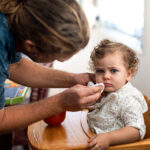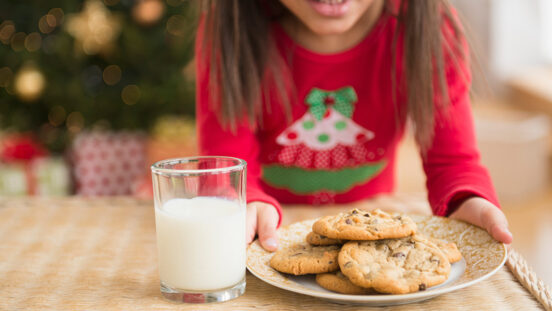Sensitive skin guide PLUS essential products for babies (and mums)
The moisturisers, oils and balms that are perfect for your baby's sensitive skin
After around nine months comfortably protected from earth-side elements, it’s no wonder that baby’s sensitive skin may need a little extra TLC once they’re out in the big wide world.
You might not know that baby’s skin is up to five times thinner than an adults, and being more delicate means it’s also prone to dryness or rashes.
Here, we break down the most common sensitive skin conditions of babies and toddlers, what to look out for, how to deal with them and the best products to keep your little one’s body moisturised, supple and healthy.
3 common baby skin conditions
- Nappy rash
- Cradle cap
- Dermatitis or atopic eczema
What is nappy rash?
Nappy rash can look like patches of pink or red or the whole area may look red and inflamed. The numerous nappy changes you make daily means you can quickly monitor changes in the that area snd it’s common for red rashes and soreness to flare up from time to time.
Using good-quality nappies, changing whenever they are wet or dirty, and using a nappy cream or balm to soothe the bottom area can help keep the skin fresh and clean.
In the first few days of life, you may opt to use cotton balls and water, or water-based nappy wipes.
Nappy skin conditions and how to treat them
If you’re using cloth nappies, consider using disposable nappies until the skin heals. Change the nappies more frequently, and use consider using warm water and oil to clean the bottom area.
Gently pat the area dry, being careful not to rub, and apply a thick layer of cream such as Dermal Therapy Little Bodies Nappy Balm, which contains 15.4% zinc oxide that creates a protective layer and 5% Panthenol to heal and soothe irritated skin.
Another option to try is Weleda Calendula Nappy Change Cream, which contains lanolin and zinc oxide to protect skin against excessive moisture, while organic almond oil and calendula and chamomile extracts care for and soothe skin. The nourishing cream provides a protective barrier, preventing soreness and reducing redness.
If the skin blisters it may also bleed and the rawness of the skin can make your baby unsettled and uhappy. The treatment is the same for above, but it’s takes longer to heal. Try to have as much nappy free time as possible to allow the skin to breathe and check with your health professional if the skin isn’t improving.

Protecting and moisturising your little one’s sensitive skin can help keep it healthy.
What is cradle cap?
Cradle cap is a type of dermatitis that it is caused by leftover pregnancy hormones causing the oil glands to become over active. This condition can look like flakes of skin on the head and as parents are understandly reluctant to was the head/hair too hard because of the fontanelles, can be tricky to get rid of.
How to get rid of cradle cap
It usually resvoles without you needing to do anything about it, however, rubbing a natural oil such as olive oil can help. Or you can opt for a cradle cap treatment such as GAIA Natural Baby Cradle Cap Lotion, which comes with a handy inbuilt comb to help loosen and remove the flakes.

What is eczema or atopic dermatitis?
In babies and toddlers, mild eczema or atopic dermatitis can appear when baby’s sensitive skin becomes overly dry or exposed to the elements. It shows up a small, dry, itchy and sometimes scaly patches of skin. It may also be caused by contact with certain products or pieces of clothing.
How to soothe eczema
Keeping skin clean and dry, limiting exposure to chemicals in baby and toddler products and ensuring the skin is moisturused may help.
DermaGen by Botanical Chemist Manuka Oil Balm is ideal for soothing eczema and is gentle enough to be used in the sensitive nappy area (plus parents can use it on their own skin in the delicate eye area and on the lips). The balm contains lavender and Manuka oil, which are both antiseptic, soothe skin irritations and keep skin hydrated.
If the eczema occurs on large areas of your baby’s sensitive skin, DermaGen by Botanical Chemist Manuka Oil Cream offers great protection and hydration for more coverage.

Red cheeks may be caused by the wind.
How to protect sensitive skin of babies and toddlers
Nappy changes
Use good quality products, change the nappy regular, provide nappy free time as much as possible and use natural products.
Bathtime basics
Many babies and most toddlers love bathtime but those water babies can find themselves with dry skin because of this. A massage with oil afterwards creates a special bedtime ritual.
Protective products
Use products sparingly, and choose those that are speficially made for baby or sensitive skin and those that are chemical free. Opt for clothing made from natural and organic fibres.
Be weather wise
Sunscreen is a must for our children’s precious skin and babies’ sensitive skin can burn a lot faster than ours. It’s important not to use sunscreen on babies under six months of age and until this time you need to avoid the hottest parts of the day, ensure your tot is in the shade and wears loose, long clothing and a hat.
Does your toddler have red, dry cheeks? They might be wind-burned. Epaderm Cream is perfect to pop on those delicious chubby cheeks before you head out the door and the 2-in-1 emollient and cleanser is clinically proven to effectively relieve the symptoms of dry skin, including hydration and smoothness. Plus the nappy bag size means you can top up when you’re out and about.




